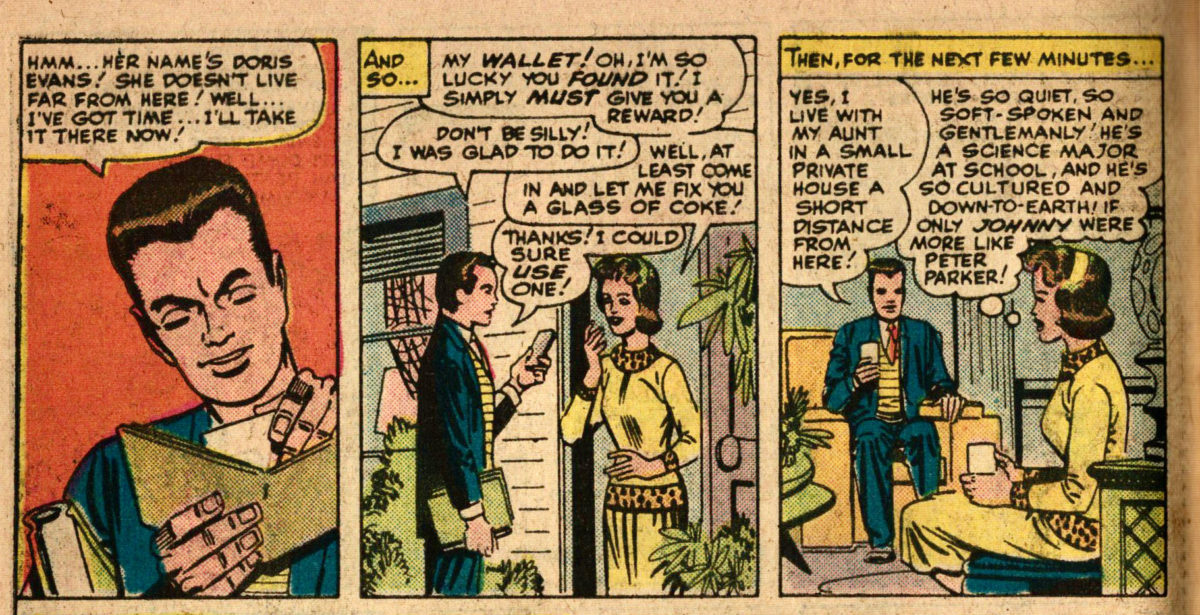Featuring: Thor
Release: November 3, 1966
Cover: January 1967
12 cents
A proud phantasmagoria of pageantry, presented by: Stan Lee and Jack Kirby
Delineated by Vince Colletta
Lettered by Artie Simek
16 pages
| Previous | #546 | Next |
|---|---|---|
| Thor #135, Story B | Reading order | Thor #136, Story B |
| Thor #135, Story B | Thor | Thor #136, Story B |
I did but provide the time– the setting– But, only in the heart can be found the final enchanted ingredient– men call love!

Let’s reflect on the relationship between Jane, Don, and Thor. To understand this love triangle, we first need to understand the relationship between Don and Thor. And we don’t.
We reflected on the nature of their relationship back in issue 129. It seems Don is Thor and Thor is Don. They have two bodies, but one mind, one set of thoughts, and one heart, one set of feelings.
There is plenty of evidence to contradict that interpretation, but that is how they are usually written. Don is Thor and Thor is Don. Don is mortal and Thor is immortal. Thor is ancient, older than humanity, and had a life long before Don. And Don presumably had a life before Thor, before he found that cane in the mountain. Though we have learned very little about that life, only that he had studied medicine and become a world-renowned surgeon and robotics expert. We’ve seen no glimpses of his past life, nor met any relatives. But presumably he has these things. But now he is Thor. Mind, heart, soul.
In fact, Thor and Don seem closer than Hulk and Banner. Who definitely seem to to be two distinct characters with opinions about the other, who share only some thoughts and feelings.
So where does Jane fit in?
Continue reading “Thor #136”
























